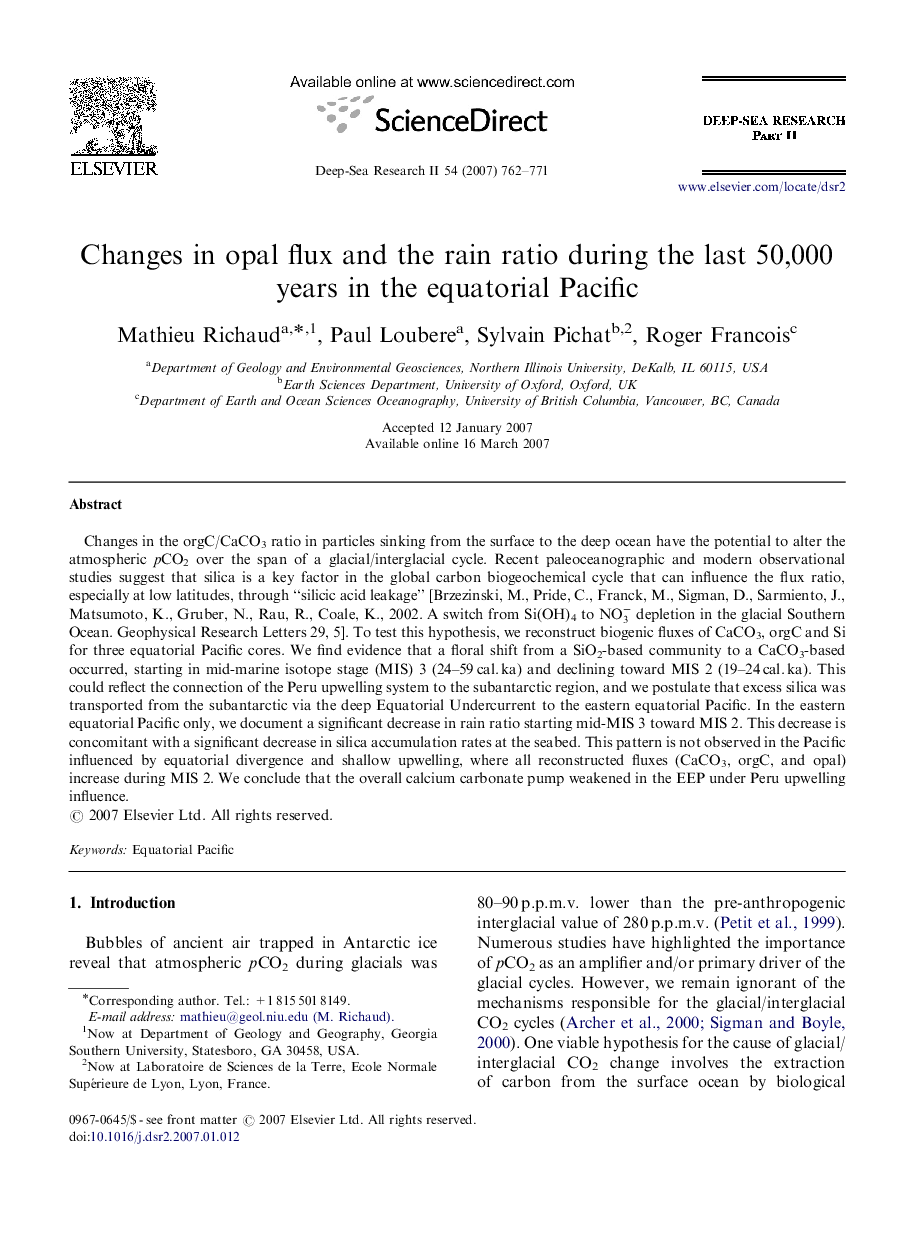| Article ID | Journal | Published Year | Pages | File Type |
|---|---|---|---|---|
| 4537645 | Deep Sea Research Part II: Topical Studies in Oceanography | 2007 | 10 Pages |
Changes in the orgC/CaCO3 ratio in particles sinking from the surface to the deep ocean have the potential to alter the atmospheric pCO2 over the span of a glacial/interglacial cycle. Recent paleoceanographic and modern observational studies suggest that silica is a key factor in the global carbon biogeochemical cycle that can influence the flux ratio, especially at low latitudes, through “silicic acid leakage” [Brzezinski, M., Pride, C., Franck, M., Sigman, D., Sarmiento, J., Matsumoto, K., Gruber, N., Rau, R., Coale, K., 2002. A switch from Si(OH)4 to NO3- depletion in the glacial Southern Ocean. Geophysical Research Letters 29, 5]. To test this hypothesis, we reconstruct biogenic fluxes of CaCO3, orgC and Si for three equatorial Pacific cores. We find evidence that a floral shift from a SiO2-based community to a CaCO3-based occurred, starting in mid-marine isotope stage (MIS) 3 (24–59 cal. ka) and declining toward MIS 2 (19–24 cal. ka). This could reflect the connection of the Peru upwelling system to the subantarctic region, and we postulate that excess silica was transported from the subantarctic via the deep Equatorial Undercurrent to the eastern equatorial Pacific. In the eastern equatorial Pacific only, we document a significant decrease in rain ratio starting mid-MIS 3 toward MIS 2. This decrease is concomitant with a significant decrease in silica accumulation rates at the seabed. This pattern is not observed in the Pacific influenced by equatorial divergence and shallow upwelling, where all reconstructed fluxes (CaCO3, orgC, and opal) increase during MIS 2. We conclude that the overall calcium carbonate pump weakened in the EEP under Peru upwelling influence.
